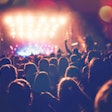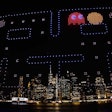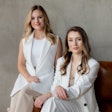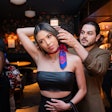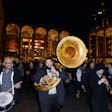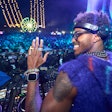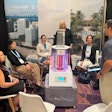In one of the most diverse show seasons in recent memory—just the sets, not even the clothes—the Paris collections continued to impress with spectacles realized by designers whose imagination (and budgets) seemed limitless. From Chanel’s faux art gallery to Louis Vuitton’s all-black showstopper to an all-out stomping marathon courtesy Rick Owens, it was fashion caffeine in its finest form.
Here’s a look at Paris Fashion Week shows that had the most significant visual impact.
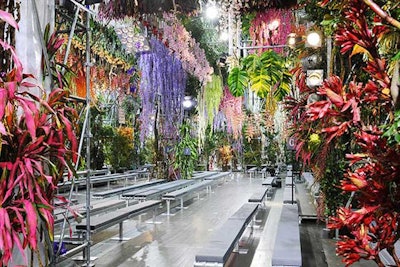
Ever enchanted by florals, Dior creative director Raf Simons utilized 300,000 stems of hanging foliage that included orchids, wisteria, and lianas, among others, mixed with plants both real and artificial, as his runway backdrop. The jungle-like setting, filled with tropical cascades of fabric flowers and real plants painted canary yellow, fuchsia pink, and chlorophyll green, was a nod to Dior’s many links to nature. In total, 48,438 square feet of decor—32,292 square feet of walls plus 16,146 square feet of roofs—was used.

For his swan-song show for Louis Vuitton, Marc Jacobs delivered a bang—and not just with the clothes. The October 2 spectacle at the Cour Carrée du Louvre tent saw the fashion house recreating many of the sets from Jacobs’s 16-year tenure: the elevators, the escalators, the fairground carousel, the fountain, last season's hotel corridors—they were all there, a reminder of the designer's extraordinary showmanship, only rendered in all black.
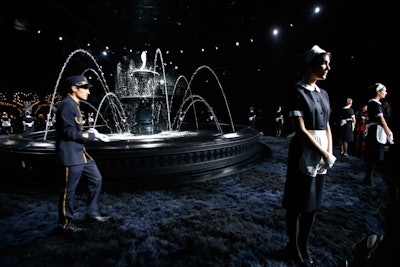
The French chambermaids that had in recent seasons become linked to Louis Vuitton shows were present once again, but clad in all black—perhaps as a visual signifier of the end of Marc Jacobs’s tenure. The show of 41 looks started at exactly 10 a.m., when the clock (an element from a show last year that put models on a train) hanging between the two escalators started to tick backwards.

Dior’s Spring 2014 show, held on September 27 in the gardens of the Musée Rodin and produced by Bureau Betak, utilized a custom-built metallic framework set that spanned 16,146 square feet. As guests arrived, they met an imposing venue façade seemingly inspired by Patrick Blanc’s iconic vertical garden. The striking landscape (98,425 feet of creepers and 3,229 square feet of branches), reminiscent of a relic overrun by nature over time, set the tone for what was in store once inside.

Riffing on the ultra-wealthy’s near-obsessive fascination with contemporary art, Karl Lagerfeld’s October 1 Chanel show played up both his sense of humor and the brand’s knack for chic satire. The Grand Palais was transformed into a gigantic white-walled gallery, where a total of 75 “artworks” were realized in massive form. That included interlocking Cs made of pearls that were falling off onto the floor, an image of Mademoiselle’s private atelier entrance, a Chanel No.5 Robot, and one of the naughtiest, “Modern Narcissus,” a life-size, 3-D nude (but for a pair of socks) lounging on an elevated Plexiglas platform. Leaving no detail overlooked, some of the props even boasted red dots beside their titles, as if they’d already been sold.

For Dries Van Noten’s September 25 show, the designer continued to play off a theme of Byzantine gold. But while his June men’s show backdrop featured massive sheets of quivering gold Mylar, the more recent outing had gold foil applied to huge slatted wood screens. Held in a massive warehouse in the 13th arrondissement, Van Noten managed to make the raw space intimate while treating editors and retailers to a performance from Colin Greenwood of Radiohead. As the guitarist played, keeping time with each model, the 50-look show featured prominently against the zig-zagging divider wall that served as a backdrop placed directly opposite where guests were seated. After the finale, the models lined up against the gold wall and guests were invited to get an up-close-and-detailed look at the outfits.

With an aesthetic loosely similar to that of Dior’s spring show, Giambattista Valli’s October 2 Moncler Gamme Rouge event also played up an urban jungle theme. Held at the Couvent des Cordeliers venue, the steamy set boasted dangling rainforest greenery with flashing siren lights above and concrete below. The sportif theme—parkas, tees, and athletic mesh—was showcased via an interlude of shirtless male models who whizzed by on skateboards after the main looks were shown. For a finale, two men in gorilla suits emerged onto the runway.
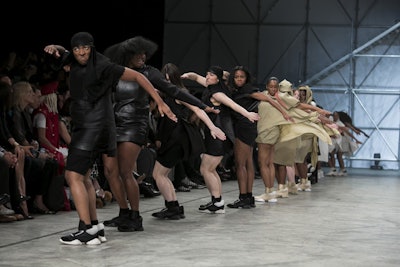
Held, once again, at the cavernous Palais Omnisports de Paris-Bercy, the September 26 Rick Owens show was invigorated by four American college step teams—the Zetas, Washington Divas, Soul Steppers, and Momentums—that the designer flew in to model his wares. With a collection inspired by teams and uniforms, each of the 40 “models” came down the massive set’s staircase clapping and thumping in the style of the energetic dance form with roots in African-American fraternities and sororities. Armed with deliberately angry facial expressions, it made for a truly unique show—not to mention one of the week’s most talked about presentations.








